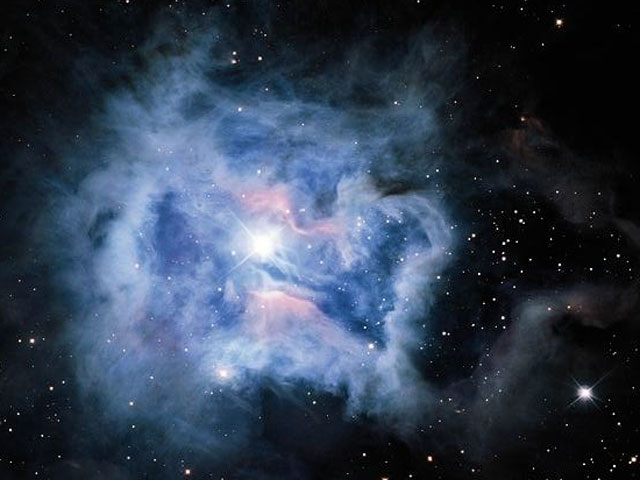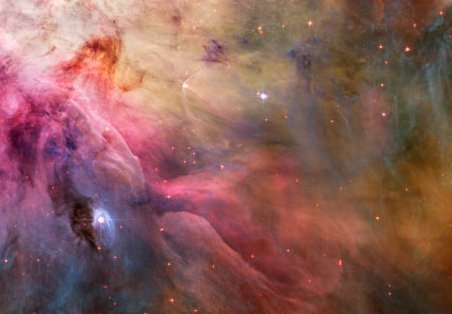emission nebula

The Iris Nebula (NGC 7023) in the constellation Cepheus. It lies 1,300 light-years away, and the region show is about 6 light-years across. Dusty nebular material surrounds a massive, hot, young star. Image credit: Jean-Charles Cuillandre (CFHT).

The Orion Nebula. Hubble Space Telescope image.
An emission nebula is a nebula that displays an emission spectrum because of energy that has been absorbed from one or more hot, luminous stars and reemitted by the nebular gas at specific wavelengths. In this respect it differs from a reflection nebula, in which the light from the nebula is simply reflected light from the central star. The difference becomes clear from looking at the spectrum of the nebula and comparing it to that of the stars providing the initial energy. If it is a reflection nebula, then the spectra will match; if it is an emission nebula, it will show emission lines of its own.
An emission nebula may be radiation-bounded or gas-bounded. A radiation-bounded nebula is one whose central star or stars are not hot enough to ionize the entire cloud of gas. The visible extent of the nebula is thus limited by how much ionizing radiation is available, not by the overall size of the cloud or by the amount of material it contains. A gas-bounded nebula, on the other hand, is kept more-or-less completely ionized by one or more hot, luminous stars within it. The visible extent of the nebula is thus limited by the actual size of the cloud and the quantity of material it contains.
The main categories of emission nebulae are H II regions, planetary nebulae, and supernova remnants. H II regions have an emission-line optical spectrum, and a thermal continuous spectrum declining in intensity as the wavelength increases (from maximum in the ultraviolet) through infrared and radio. Supernova remnants have an emission-line optical spectrum and a nonthermal radio spectrum. Temperatures of planetary nebulae are much higher than those of H II regions.


